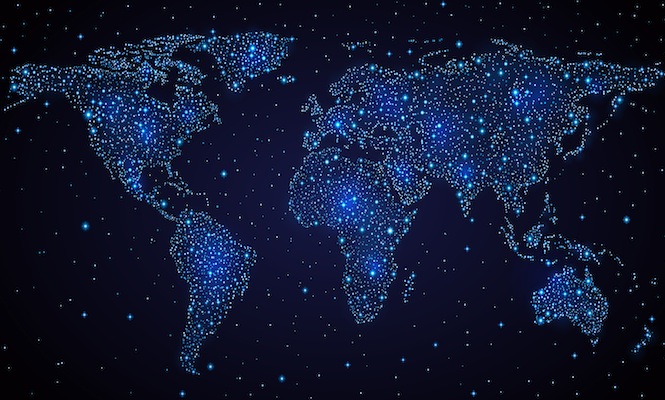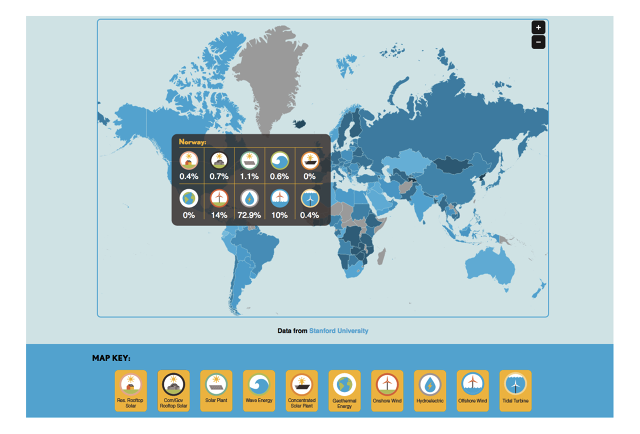We can eliminate the use of fossil fuels completely and quickly, if countries can just find the political will.
In a few decades, the world could be powered by nothing but wind, water, and sunlight. That’s the conclusion of a new study released just before world leaders meeting in Paris to strike a climate deal.
“These are basically plans showing it’s technically and economically feasible to change the energy infrastructure of all of these different countries,” says Mark Z. Jacobson, director of the Atmosphere/Energy Program at Stanford University, who worked with University of California colleagues to analyze energy roadmaps for 139 countries.
The researchers crunched numbers to see how much energy each country would need by 2050—including electricity, transportation, heating and cooling, industry, and agriculture—and then calculated how renewable energy could cover those needs, where it could go, and how much it would cost.
People who are trying to prevent this change would argue that it’s too expensive, or there’s just not enough power, or they try to say that it’s unreliable, that it will take too much land area or resources,” Jacobson says. “What this shows is that all these claims are mythical.”
Renewable energy is already cheap and will get cheaper. Even now, Jacobson says, wind is the cheapest electricity in the U.S., costing just 3.5 cents a kilowatt-hour (unsubsidized) compared to 6 to 8 cents for natural gas. That’s not including health and climate benefits: The study estimates that shifting infrastructure would save 4 to 7 million lives a year of people who would have died from air pollution—deaths that cost the world around 3% of the global GDP.
Shifting to renewables would create 20 million more jobs than those lost in the fossil fuel industry. Energy prices would stabilize, since renewables don’t use a commodity fuel. Decentralizing power would reduce the risk of both terrorism at power plants and outages from storms. Countries could become energy independent, eliminating a major cause of global conflict. Four billion people who don’t have reliable (or, in some cases, any) access to energy today would have power.
The study lays out a timeline of how the shift could happen. By 2020, countries would stop building new coal, natural gas, or nuclear plants (or biomass, which the researchers don’t consider a good alternative). New home appliances like stoves and heaters would be electric, not gas. By 2025, new cargo ships, trains, and buses would be electrified. Cars and trucks would get there by 2030. Eventually, by 2050, the transition would be complete.
It sounds simpler than we’ve led to believe. And that’s because the catch, of course, is political: Countries will have to decide to make the shift. If they do, though, it could actually work.
Source: FastCoExist.com

